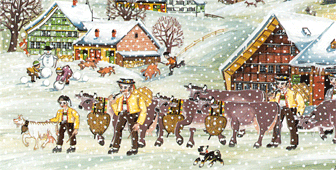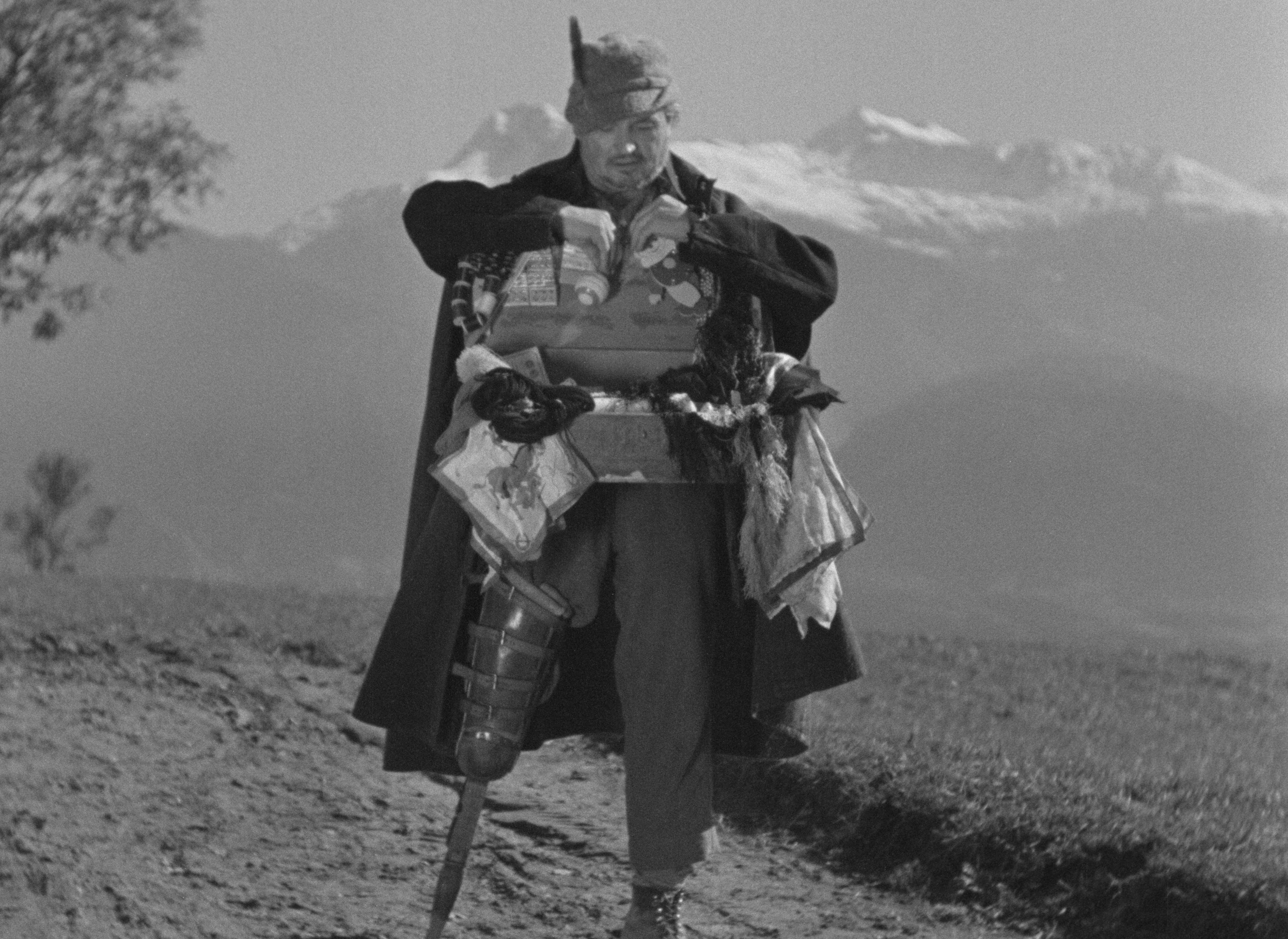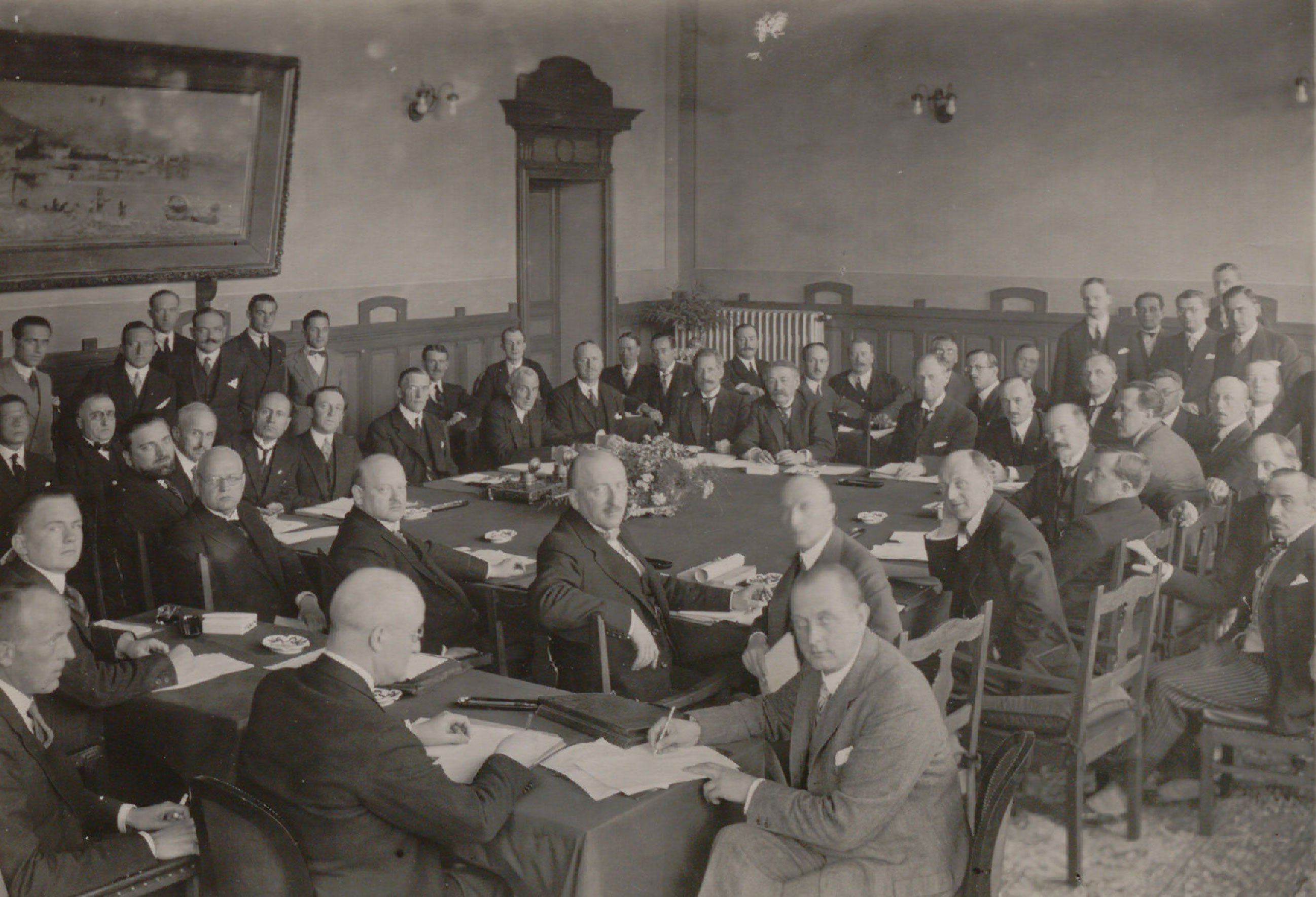
Keeping to traditions in Appenzell

While technology and globalisation have much of Switzerland firmly in their grasp, time-honoured traditions are still flourishing in the eastern canton of Appenzell.
Artist Markus Fischli is restoring a painting on an antique cabinet. At 80 years of age, he still works five to six hours a day. Fischli is one of Appenzell’s master “peasant art” painters.
His work is showcased in a gallery he’s set up beside his atelier in the well-preserved town of Appenzell. Like most peasant art, his pictures idealise rural life in the canton, and was first developed by local farmers in the 17th century.
“This is a picture of what we knew as the ‘stitching day’,” Fischli explains.
“That was a day when the young women got together and did embroidery work. They were said to work like machines, because their hands moved like lightening, pushing the needles through the material. They really looked like machines!”
Roger Dörig is a good example of the exceptionally high proportion of people in the region who work in other trades that have all but died out elsewhere.
Young enough to be Fischli’s grandson, it wasn’t long ago that Dörig turned his back on Appenzell to see the world. But the more he saw, the more he missed the Appenzell way of life.
Returning home, he followed the footsteps of his father, grandfather and great-grandfather and became a craftsman – working brass and silver into ornaments that adorn the rich costumes still worn on special occasions.
Dörig proudly shows tourists around his workshop. He takes his hammer and knocks a melody out of oversized cowbells hanging against one wall. The cowbell collars and many other objects are richly adorned with his art.
He hammers a stylised cow out of a small piece of brass, using a technique known as chasing. The piece will eventually be put on traditional Appenzell braces, known for the wide cross strap that stretches across the chest.
The braces are part of the costume men wear while driving their herds up to the alpine pastures in summer. “It’s very important that the design on the cross strap shows the classic scene of a cattle and goat drive,” says Dörig.
He says it takes him about a day and a half to finish the design covering the bottom of a tobacco pouch, which is as much a part of the Appenzell costume as the pipe smoked by most men in the canton.
One of the most striking buildings in Appenzell, the “Blue House”, belongs to the Fässler brothers. It displays a rich collection of restored antique furniture.
The brothers make furniture in their own right, having taken over their father’s cabinet making shop. Each piece bears the Fässler signature, even though they are unmistakably Appenzell in style.
The brothers and other family members working in the shop cut and assemble the furniture, carve intricate patterns into the wood and, like Dörig, are skilled at chasing to embellish metal hinges and keyhole surrounds.
Klaus Fässler inspects a traditional slate-top table. It’s a useful object still found in many Appenzell farmhouse kitchens because hot pots and pans can be placed directly on the slate.
“It has other advantages. People playing cards can keep score directly on the table,” Fässler explains. Then a smile appears: “A man can also leave a note for his wife if he’s going out, to tell her what she should do!”
Fässler’s anecdote reveals a less appealing side of Appenzell, where women were only given the vote 10 years ago. Evidence of that historic occasion is painted on a panel on a house front just down the road from the Fässlers.
The panels reflect life through the seasons in Appenzell and include a scene showing the open air gathering held each spring when the town’s eligible voters decide on local issues.
After 1991, the panel had to be retouched to include women among the voters.
The arts and crafts reflect just how slowly change comes to Appenzell.
by Dale Bechtel

In compliance with the JTI standards
More: SWI swissinfo.ch certified by the Journalism Trust Initiative




































You can find an overview of ongoing debates with our journalists here . Please join us!
If you want to start a conversation about a topic raised in this article or want to report factual errors, email us at english@swissinfo.ch.